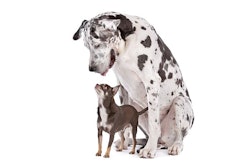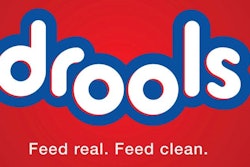
Pet owners’ concerns seem to have turned from the simmering pandemic to the economy as inflation increases the costs of pet food, treats and other pet products. In June, American Pet Product Association (APPA) researchers surveyed 2,020 pet owners in the United States. A higher percentage of millennial, Gen X and baby boomer pet owners expressed plans to spend less on pet food because of financial concerns than in previous studies. APPA published their findings in the report “APPA Pulse Study: Pet Ownership In The Current Economy.” Unlike older generations, the percentage of Gen Z didn’t increase, but their level of economic concern was already higher than the levels reported by the other generations, APPA analysts wrote in the report. All generations were more inclined to start making budget cuts to pet supplies before pet food.
“Millennials report the highest percentages who say they plan to spend less money on pet supplies (45%) and pet food (32%), followed by Gen Z, Gen X and Baby Boomers,” wrote APPA analysts. “Gen Z and Millennials demonstrate equal percentages who are planning to switch to different brands of pet supplies and pet food (36% and 32%, respectively).”
In the June survey, 23% of pet owners agreed with the statement,"
Given my current finances/the economy, I plan to spend less money on pet food." In February, that figure was 18%.
Pet food spending changes in 2022
The economic situation may be worsening for many pet owners as the year goes on. In February, 63% of pet owners reported spending the same amount in the previous month and the current one. By June, that had declined to 49%. Pet owners who stated that they spent more in the past month went from 26% in February to 31% in June. Likewise, the percentage of those who spent less dropped from 11% to 20%.
“Although the net percentage of pet owners who spent more on their pets in the past month is higher than that of pet owners who spent less, the increase in the percentage saying they spent less is greater,” they wrote.
Gen Z or Millennial urbanite pet owners with young children were most likely to have spent more on their pets in the past month. Those who spent less tended to be Gen X or Millennial women with lower household incomes. Baby Boomers and those with higher household incomes were most likely to answer that they spent the same.
Nevertheless, for most pet care items, at least 50% of pet owners would continue their same spending habits. Not surprisingly, pet owners were likely to continue buying the same food and medication (68% and 65%, respectively). Pet owners stated they would purchase fewer pet toys (43%), grooming supplies (39%) and other products (35%). If the economy worsens, between 15% and 20% of pet owners predicted they would purchase more pet care items.
















